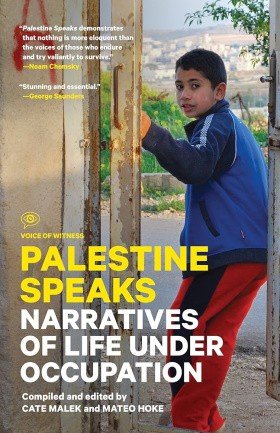When we first meet, Wafa tells us that her goal is to correct the stereotypical images permeating western media about Palestinian people. Standing in her small office in a dingy building in the middle of Gaza City, this seems like a daunting task, but it’s one she is clearly passionate about. She is a small, poised woman with boundless energy wearing a white niqab that covers her head and face. Working with a group of other young men and women, she puts together videos to send to universities around the world featuring ordinary Gazans explaining their hopes and dreams. She also runs a Facebook page, does regular interviews with the media, and has a wide network of friends around the world. She speaks simply but powerfully in English. When asked about the water quality, she bursts into laughter and asks if we’ve tried to wash our hair with it yet. Wafa manages to retain her sense of humor, despite Gaza’s many deprivations.
Movement of people and goods between Israel and Gaza has been restricted since at least the First Intifada. However, Gaza in the 1990s maintained strong economic and administrative ties to both Israel and the West Bank. Thousands of workers passed through the Erez border crossing from northern Gaza into Israel every day. Travel between Gaza and the West Bank was possible for many Palestinians, even if a bit of a bureaucratic hassle. All of that changed in 2000 at the start of the Second Intifada. Israel began closing the borders to Gaza in what it claims was a response to rocket attacks and suicide bombings. It also destroyed Gaza’s only airport. In 2001, Israel began the construction of a massive barrier wall around the entire Gaza Strip and set up a military buffer zone around the perimeter of Gaza, which now takes up 14 percent of Gaza’s land area (and which expanded to roughly 44 percent of Gaza’s land area during Israel’s July 2014 invasion). Israel also significantly restricted movement between the strip and the West Bank for most Palestinians. The border closures devastated the Gazan economy.
In 2005, toward the end of the Second Intifada, Israel unilaterally withdrew its military from Gaza and evacuated all Israeli settlements in the Gaza Strip, effectively handing administrative and security control to the Palestinian Authority while opening up some of the closed border crossings to Gaza. However, after the political party Hamas won full control of Gaza in 2007, Israel again closed the borders and imposed a blockade of goods into Gaza by land, air, and sea.
For Gazans such as Wafa Al-Udaini, the border closings would have made life nearly impossible if not for smuggler’s tunnels that allowed goods to pass from Egypt into Gaza. Though seen as a military threat by Israel (a means of weapons smuggling to Hamas), the network of over 1,200 tunnels also provided Gazans with food, construction material, medicine, and occasional luxury goods that wouldn’t otherwise be available to them.
A LOT OF KIDS SKIPPED SCHOOL TO DEMONSTRATE OR THROW ROCKS
I was born in a hospital in Gaza City in 1988. I’m from a big family—I have five brothers and six sisters. I’m the youngest. The town I grew up in is called Deir Al-Balah. It’s right in the middle of the Gaza Strip, about a half-hour drive south of Gaza City.1
I grew up used to seeing soldiers in the streets while I played. They’d always be chasing someone who’d thrown stones. Especially by the start of the Second Intifada around 2000, there were so many soldiers around all the time.2 I remember Israeli soldiers came into our home once to arrest two of my brothers. One brother was seventeen at the time, and the other was just thirteen. They banged on the door until my mother opened it, and then the soldiers hit her on their way in to get my brothers. I was so scared. The soldiers claimed my brothers were throwing stones, but really they might have arrested my brothers just for looking at them funny. That happened a lot. I cried and cried after they left, it was so frightening.
My seventeen-year-old brother was studying for his tawjihi exams at the time, and after he was sent home after being detained for a couple of months, he was too frustrated to continue studying.3 My younger brother was released right away, but he stopped going to school. During the Second Intifada, a lot of kids skipped school to demonstrate in the streets or throw rocks. But I stayed in school and continued to high school during the Second Intifada. Then suddenly, in 2005, Israeli soldiers left Gaza.4 For the first time we didn’t see the soldiers in the streets, only Gazans. But at the same time, Israel was sealing the borders, so it was hard for people to go to work. Then Hamas got elected, and a lot of aid into Gaza was cut off.5
Not long after that, I passed my tawjihi exams and got accepted into Al-Aqsa University in Gaza City.6 I began studying education at Al-Aqsa around 2006, and then after my first year of school, the blockade started.7 The first thing I remember was the blackouts. Suddenly, we only had power a few hours a day at most. And there was no propane gas to cook with anymore, so we had to hoard it. Really basic things—formula and diapers, for instance—weren’t available, at least at first. But then so much of what we needed started coming through the tunnels. Before long you could get just about anything you wanted—European chocolate, designer clothes, anything.
EVERYWHERE I LOOKED I SAW SMOKE
I was nineteen and still a student during the air strikes in 2008 and 2009. The first day of the strikes, December 27, 2008, was quite memorable. I left the university early because I only had one lecture that day. Just before I reached my house, I heard many explosions. I said to myself, Oh my God, what’s happening? There’s so much smoke, and I can’t see. I ran home and went upstairs to see what was going on from our roof, and everywhere I looked I saw smoke, but I didn’t know exactly what was happening—there was no electricity so I couldn’t find out what was going on from the TV. I tried to call out to my brothers and my sisters, but they were out of the house and nobody replied.
I was so worried. My neighbors said that Israeli fighter jets had targeted a place in Khan Younis, but some other neighbors said that they targeted a place in Gaza City, and then some others said, no, it was in the south.8 Everyone had a different idea about what was going on. I thought, Oh my God, who should I believe? When I looked up, the sky was full of airplanes and helicopters.
The first day, the fighter jets bombed hundreds of places, including mosques. They must have targeted every mosque in the Gaza Strip. Our house is close to a mosque, and some of our neighbors were so afraid, because the Israelis could have attacked the mosque at any time and destroyed our building in the process. So our neighbors wanted to go to another, safer place. But we told them there was no safe place in the Gaza Strip. Wherever you went, you would find danger there. The jets ended up bombing the mosque and our house shook violently during the explosion, but nobody was hurt. Only the windows of our building were damaged.
It’s a funny story, actually. Okay, it’s not funny, but our relatives lived near the border with Israel, and they came to live with us near the coast where it was a little safer. But unfortunately, the night they came to our house, the Israelis targeted the mosque. They were so scared! Our relatives left our house saying, “Oh my God! No place is safe to live! We’d rather die in our own house than die in yours!”
I remember the drones showing up. They buzzed through the skies, and the sound they made was like they were whispering, “I’m going to attack you, I’m going to target your house, your family, your friends.” But now we’re used to the sound of drones.
The last war, in 2012 was more difficult, actually, because in 2008, to some extent, the Israeli army was coming into Gaza. But in 2012, it was just planes. They hit many places, not just police stations and mosques, but houses—really everything in the Gaza Strip.
By 2012, I had graduated and become a teacher. I was a substitute, and would fill in where I was needed. When I was a teacher, I had a very smart student, and I loved her so much. She was an excellent student. She was in the first grade when I taught her. But just about five months after the air strikes in 2012, I met her again, and I was shocked when I saw her. She had lost her mind, and she was walking down the street as if she didn’t know anybody. I went to her and asked, “Do you remember me? I was at your school. Do you remember?” The girl looked at me and laughed. She didn’t remember anything. I spoke with her mom and she told me the girl’s uncle was killed in front of her eyes. The Israelis bombed the place where he was sitting. He was a civilian, not involved in the resistance at all. He was just sitting in front of his house. And, unfortunately, they also traumatized this girl. And really, I was so shocked and so sad when I saw her.
WHEN THERE WAS NO ELECTRICITY, MY MIND WOULD FEEL SO SLEEPY
Since 2007, we’ve suffered a lot from power cuts. We might get six or eight hours a day on good days. And power might be on in the morning or at night. Every week we get a new schedule, published in the papers and announced on TV or radio. Everything is affected by the power cuts. So it’s hard to establish a daily routine.
We never had a generator at my family’s house, because I have a lot of nieces and a lot of nephews, and we were so afraid that one of them would touch it and get burned. You know, you hear many stories of generators blowing up and whole families dying. So we preferred to live without electricity than to see our families injured. We wouldn’t use candles either because they’re dangerous. Instead, we had battery-operated lights that can be charged during the limited time that power is on. They’re safer.
I lived in my parents’ household until this past year. There were about twenty-five, twenty-six people in our household—mostly my brothers’ families. All my sisters had married and moved out. During that time, when the power went out, we’d go to the upstairs of the house. I’d sit with my extended family, chatting and having fun.
Sometimes if most of the family was out, I’d read books or write. But when there was no electricity, my mind would feel so sleepy! This was always a major problem for me. I’d lose concentration for reading or studying for my exams, for example. When I was still a student, I’d have to prepare an assignment for our professor at the university, but I couldn’t rely on an internet connection because power would go in and out, so maybe I wouldn’t finish in time. Plus, many times the lights wouldn’t last for more than two hours, so I had this tiny window to do all my studying. It was a lot of pressure.
As for housework, I couldn’t use the washing machine much of the time. I couldn’t even make tea with the electric kettle. And I really suffered from not being able to iron my clothes. After I graduated and started teaching, I’d be late to work many times because I was waiting for the electricity to come on to iron. Sometimes I’d go to my friend’s house in another city where they had power that day, just to do some ironing.9 Since the blockade began, we’ve had a shortage of cooking gas too. I cannot make sweets or bake a cake. Every time I want to make one, I can’t because I don’t have any propane gas.
Then there are the water problems. The water is affected by the electricity. There is a water pump in town, so when there is no power, for sure there will be no water. Then the water is polluted. It’s saltwater, not for human use.10 We buy water for drinking and cooking. The other water cannot be used for even animals. We only use it to wash our dishes, clean the house, and wash clothes. Even in the shower, the water ruins our hair. We wash our hair with the sweet water, but not all the time. We can’t manage to have a shower with only sweet water. It’s not free. So maybe for a wedding, we’ll wash our hair well. We have to pay for everything, and a lot of people here in Gaza are unemployed. So they can’t pay for the electricity, they can’t pay for the gas or the water.
We depended on the tunnels to bring us our basic needs—our food, our clothes, our medicine, everything. When the tunnels were open, we’d go to the store and find all sorts of things. But Egypt and Israel have destroyed the tunnels now, so there’s hardly anything in the stores.11
MY WEDDING DRESS MIGHT HAVE BEEN BROUGHT THROUGH THE TUNNELS
This year, I got married. Planning for the wedding was a bit of a challenge! One thing I remember was visiting the market to buy my wedding dress. I asked the merchant if all the dresses had been made in Gaza, and he said that many had been sewn in Turkey or Egypt and brought through the tunnels. It’s amazing to think of these beautiful dresses being carried fifty feet under the ground through dark, muddy tunnels.
My husband and I were married on March 24, 2014. The day of the wedding, we had to improvise a little. Normally families would prepare food themselves for a wedding in Gaza, but cooking gas was too hard to find. We had to hire a restaurant to cater the wedding for us, since restaurants had an easier time finding cooking fuel. Of course it was all very expensive. We rented a wedding hall, but nobody could afford to take a taxi to the wedding hall because gasoline is expensive, and cabs are nearly unaffordable. We had everyone coming from the neighborhood meet at the bus stop, and we all went to the wedding hall from there. Still, it was a beautiful wedding, and I was happy even in my wedding dress that might have been brought through the tunnels.
Now that the tunnels are closed and nothing can get through Egypt, things are getting harder. Nobody has any money, and basic necessities like food are more expensive than ever. There is so much that needs to change in Gaza, but if I could change just one thing, I’d fix the poverty that’s making life so difficult for so many Gazans.
Wafa and her family were especially hard hit by the bombing assault on Gaza that began July 8. They had no water for days at a time, and their access to electricity dwindled. Wafa was unable to use internet or even charge her cell phone, making it impossible to talk with her to get a full update. When she had electricity, she posted brief messages on Facebook and Twitter assuring her followers she was still alive. On July 8, she posted that the Israeli air force sent a warning to the twenty-five family members living in her father-in-law’s house (seventeen of whom were children), telling them to leave their home. The family was able to leave before the house was destroyed. On July 25, Wafa wrote, “[Two weeks ago] they bombed my father in law’s house, and today Israeli planes bombed my house, our only shelter, for no reason, and no evidence, just to [make] us kneel, but we’ll never ever leave our country for them. Pray for us.”
1 Deir Al-Balah is a city of about 55,000 people located nine miles south of Gaza City. The vast majority of residents in Deir Al-Balah are refugees who settled in the city after the war in 1948. The city is known for its date palms, and it has a history that stretches back to fortifications used by pharaohs in the fourteenth century BCE.
2 The Second Intifada was also known as the Al-Aqsa Intifada. It was the first major conflict between Israel and Palestine following the Oslo accords, and it lasted from 2000 to 2005. For more information on the Intifadas, see Appendix I, page 295.
3 An exit exam for high school. For more on the tawjihi exams, see the Glossary, page 304.
4 Israel unilaterally decided to disengage from Gaza in 2004, and the plan went into effect in the late summer of 2005. Under Israel’s plan, twenty-one settlements in the Gaza Strip would be evacuated, and the settlers compensated. The Israeli military would leave Gaza completely and leave the entire strip to the administrative and security control of the Palestinian Authority.
5 After Israel unilaterally withdrew from Gaza, parliamentary elections were held in 2006, and Hamas won the majority of the seats. For more information, see Appendix I, page 295.
6 Al-Aqsa University is one of a half dozen or so colleges and universities in Gaza. It serves around 6,000 undergraduates.
7 Economic sanctions began in 2006 after the election of Hamas, but the full blockade wasn’t imposed until a year later, after bloody fighting between Hamas and Fatah in June 2007 drove Fatah out of Gaza.
8 Khan Younis is a major city in Gaza located about twenty miles south of Gaza City. It has a population of around 250,000.
9 The electricity outages rotate throughout the Gaza Strip, so different cities lose power at different times of the day.
10 Up to 95 percent of Gaza’s water is not fresh. Aside from salt, most of Gaza’s water also contains organic and inorganic toxins. Most drinking water is purchased in tanks in Gaza’s markets. Salt water is frequently used for showering and cleaning.

























